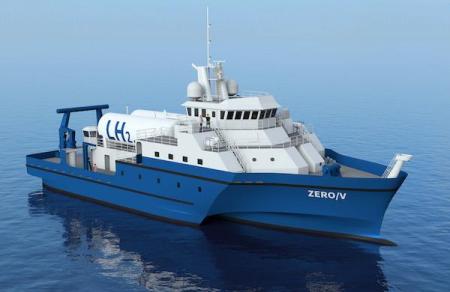Do You Know The Theory Behind The Floating Of The Ship?
Hello aspirants,
One of the most favourite questions of the interviewer in the SSB tells me how does a ship or a boat float on water? Most of you know the answer and will say that’s just because of the ‘Archimedese principle’! But to your surprise let me tell you merely by saying these two golden words will not satisfy the IO as he will dig deep and say great! Now explain what's that to me and if you are ignorant about the working then my friend you will be doomed. But no need to worry we will tell you every bit of science that is involved in keeping the boat or the ship to float on the water and after going through the post you will have a considerable amount of knowledge about the topic.
So lets set our sails,
-
Why do ship/boat float and not sink into the water?
- The sailing boat seems very simple and pleasing while riding on it but it is more complex and confusing than it sounds and it's best discussed through a scientific concept called buoyancy.
- Any object will either float or sink in water depending on its density.
- If it's denser than water, it will usually sink; if it's less dense, it will float. It doesn't matter how big or small the object is.
- The basic rule is that an object will sink if it weighs more than the same volume of water.
-
Archimedes' Principle
- When something is resting in or on water, it feels an upward (buoyant) force equal to the weight of the water that it pushes aside (or displaces).
- If an object is completely submerged, this buoyant force, pushing upwards, effectively reduces its weight: it seems to weigh less when it's underwater than it does if it were on dry land.
- For example, it is easy to move a mug inside a bucket full of water rather than taking out the mug from the bucket upside down.
- All this explains why the weight of a ship (and its contents) is usually called its displacement, if the ocean were a bowl of water filled right to the brim, a ship's movement is the weight of water that would spill over the edge when the vessels were launched.
-
Understanding the concept of Upthrust
- Water is a reasonably dense liquid that is virtually impossible to compress. Its high density means it can exert a lot of pressure: it pushes outward in every direction, and this net upward force is called upthrust which helps the boat from underneath.
- There are few conditions which need to be understood-
- If the boat weighs less than the maximum volume of water it could displace, it floats. But it sinks into the water until its weight and the upthrust exactly balance.
- The more load you add to a boat, the more it weighs, and the further it will have to sink for the upthrust to balance its weight.
- If the boat keeps on sinking until it disappears, it means it cannot produce enough upthrust.
-
How does a ship move on water?
- Water resistance (drag) is by far the most prominent force ships have to work against. The more weight a boat carries, the lower it sits in the water and the more water resistance it creates.
- That's why boats have sharp narrow bows (to push water cleanly out of the way), and curved front edges that plane (lift them out of the water as they move along).
- Hydrofoils push this idea to the limit by using underwater wings to lift their hulls up and clear of the water as they move along.
- Ships and boats propel on the Newtons three laws of motion
- They don't go anywhere unless a force of some kind pushes or pulls them and that is 1st law of motion.
- When there is a suitable force, it makes them accelerate, and a more significant effect will stimulate them more, and yes that’s the 2nd law of motion.
- If a boat wants to go forward, it has to apply a backwards-pushing force, and that is what the 3rd law states that for every action there is the equal and opposite reaction. This law is used by the astronauts in space as well to move.
I hope this post was helpful in your preparation.
Stay connected to DDE for more.









 Buy Now on Amazon
Buy Now on Amazon
